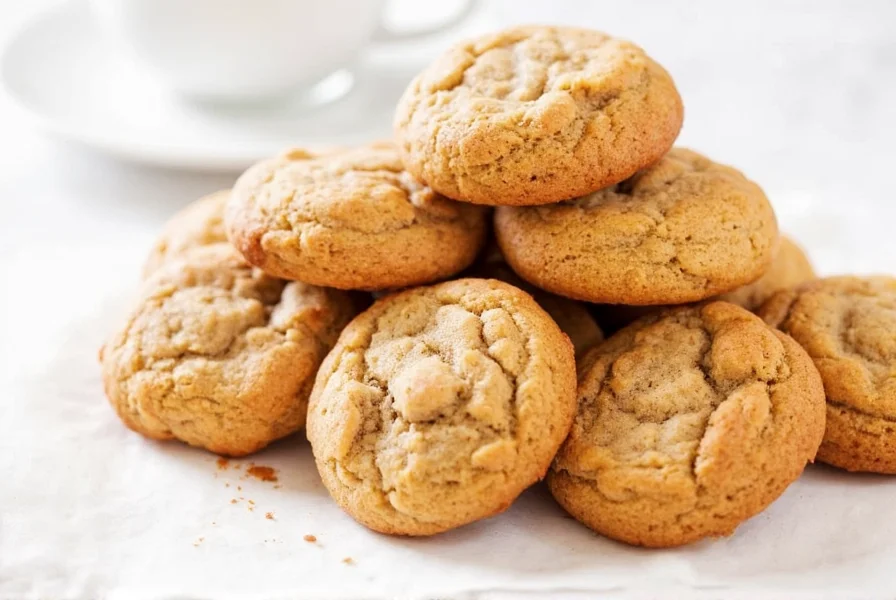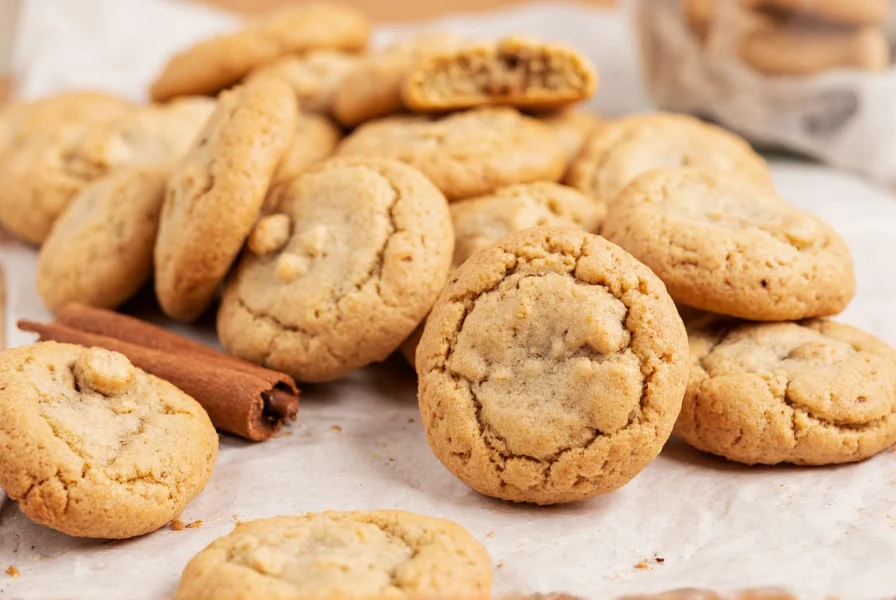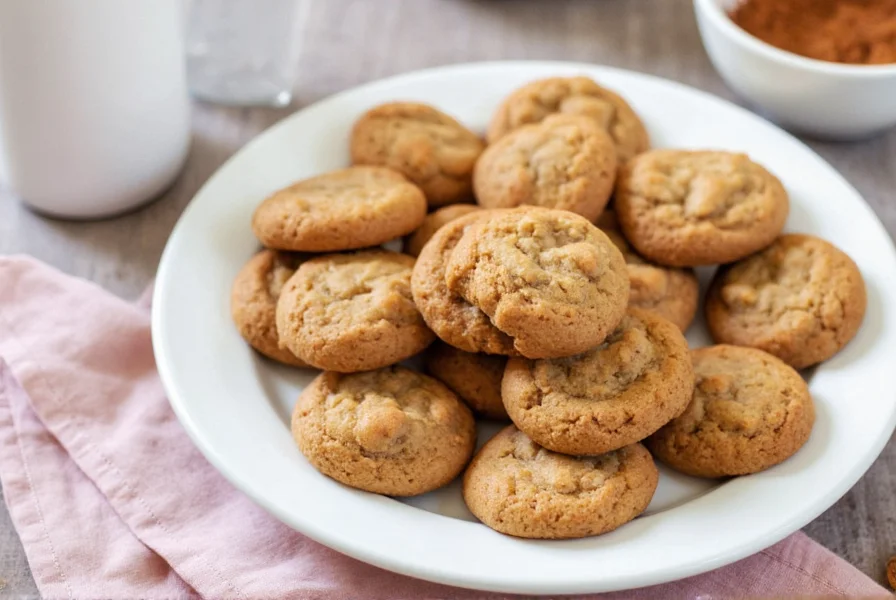Cinnamon transforms ordinary cookies into aromatic delights with its warm, complex flavor profile. Understanding how to properly incorporate this versatile spice can elevate your baking from good to exceptional. Whether you're making classic snickerdoodles, buttery sugar cookies with a cinnamon twist, or experimenting with new creations, the type of cinnamon you choose and how you use it significantly impacts the final result.
The Science Behind Cinnamon in Cookie Baking
Cinnamon isn't just a flavoring agent—it interacts chemically with other ingredients in your cookie dough. The cinnamaldehyde compound responsible for cinnamon's distinctive aroma reacts with sugars during baking through the Maillard reaction, creating deeper, more complex flavors. When combined with fats like butter, cinnamon's essential oils disperse evenly throughout the dough, ensuring consistent flavor in every bite.
Temperature plays a crucial role in cinnamon's flavor development. Baking at too high a temperature causes the volatile oils to evaporate too quickly, resulting in diminished cinnamon flavor. The optimal baking temperature of 350°F (175°C) allows sufficient time for flavor compounds to develop without burning the delicate spice.
Choosing the Best Cinnamon for Cookies
Not all cinnamon is created equal for baking purposes. Understanding the differences can dramatically improve your cookie results:
| Type of Cinnamon | Flavor Profile | Best Cookie Applications | Coumarin Content |
|---|---|---|---|
| Ceylon ("True" Cinnamon) | Delicate, sweet, citrusy notes | Delicate butter cookies, shortbread, tea cookies | Very low (safe for regular use) |
| Cassia (Common "Cinnamon") | Strong, spicy, robust flavor | Snickerdoodles, spice cookies, bold-flavored treats | Higher (moderate consumption recommended) |
| Saigon Cinnamon | Intense, sweet-spicy, complex | Special occasion cookies, gourmet baking | Moderate to high |
For most home bakers, Cassia cinnamon provides the familiar, robust flavor associated with traditional cinnamon cookies. However, professional bakers often blend Ceylon and Cassia (typically 1:1 ratio) to achieve balanced complexity. When purchasing cinnamon, look for freshly ground options or grind your own sticks for maximum flavor intensity.

Perfect Cinnamon Cookie Recipe: The Science-Backed Approach
Based on extensive baking tests and flavor chemistry principles, this recipe delivers consistently excellent results:
Ingredients
- 1 cup (226g) unsalted butter, softened to room temperature
- 3/4 cup (150g) granulated sugar
- 3/4 cup (165g) packed light brown sugar
- 2 large eggs, room temperature
- 2 1/4 cups (281g) all-purpose flour
- 1 1/2 teaspoons baking soda
- 1/2 teaspoon baking powder
- 1 1/2 teaspoons ground cinnamon (Cassia recommended)
- 1/2 teaspoon fine sea salt
Cinnamon-Sugar Coating
- 1/4 cup (50g) granulated sugar
- 2 tablespoons ground cinnamon
Method
- Cream butter and sugars together for 3-4 minutes until light and fluffy (critical for texture)
- Add eggs one at a time, mixing thoroughly after each addition
- In separate bowl, whisk dry ingredients (flour, leaveners, cinnamon, salt)
- Gradually incorporate dry ingredients into wet mixture
- Cover and refrigerate dough for minimum 2 hours (essential for flavor development)
- Preheat oven to 350°F (175°C) with rack in center position
- Roll dough into 1.5-inch balls, then roll in cinnamon-sugar mixture
- Place 3 inches apart on parchment-lined baking sheets
- Bake 10-12 minutes until edges are set but centers remain soft
- Cool on baking sheet for 5 minutes before transferring to wire rack
Troubleshooting Common Cinnamon Cookie Problems
Even experienced bakers encounter issues with cinnamon cookies. Here's how to solve the most frequent problems:
Why Do My Cinnamon Cookies Go Flat?
Flat cookies typically result from:
- Butter too warm when mixing (should be cool room temperature)
- Insufficient flour measurement (use spoon-and-level method)
- Oven temperature too low (use an oven thermometer)
- Dough not chilled sufficiently before baking
Cinnamon Flavor Too Weak?
Boost cinnamon presence by:
- Using freshly ground cinnamon sticks
- Adding 1/4 teaspoon cinnamon essential oil (use sparingly)
- Letting dough rest 24 hours before baking for flavor development
- Increasing cinnamon to 2 teaspoons in dough (without affecting texture)
Creative Cinnamon Cookie Variations
Once you've mastered the basic technique, experiment with these professional variations:
Cinnamon Roll Cookies
Roll chilled dough into logs, slice, and place cut-side down on baking sheet. After baking, drizzle with cream cheese glaze made from 4 oz cream cheese, 1/2 cup powdered sugar, 2 tablespoons milk, and 1/2 teaspoon vanilla.
Spiced Cinnamon Chocolate Chip
Add 1 teaspoon cinnamon directly to cookie dough along with 1 1/2 cups chocolate chunks. The cinnamon enhances chocolate's natural flavors through complementary flavor compounds.

Proper Storage for Maximum Freshness
Cinnamon cookies maintain optimal flavor and texture when stored properly:
- Airtight container at room temperature: 5-7 days
- Freezing baked cookies: Wrap individually, store up to 3 months
- Freezing dough balls: Place on baking sheet, freeze solid, then transfer to freezer bag for up to 3 months
Revive stale cookies by placing a slice of bread in the container overnight—the cookies will absorb moisture from the bread. For frozen cookies, thaw at room temperature for 30 minutes before serving.
Frequently Asked Questions
What's the difference between snickerdoodles and regular cinnamon sugar cookies?
Snickerdoodles specifically use cream of tartar and baking soda as leaveners, creating a distinctive tangy flavor and chewy texture. Regular cinnamon sugar cookies typically use baking powder alone and have a more straightforward buttery flavor profile with cinnamon sugar coating.
Can I make cinnamon cookies without cream of tartar?
Yes, you can make excellent cinnamon cookies without cream of tartar. Simply replace cream of tartar with additional baking powder (use 1 1/2 teaspoons baking powder instead of 1/2 teaspoon cream of tartar plus 1/4 teaspoon baking soda). The texture will be slightly different—less chewy and more cake-like—but still delicious.
Why does my cinnamon cookie dough taste bitter?
Bitterness in cinnamon cookie dough usually comes from expired baking soda or powder, or from using too much cinnamon (particularly Cassia). Cinnamon naturally contains coumarin, which can taste bitter in high concentrations. Try reducing cinnamon to 1 teaspoon and ensuring your leaveners are fresh (test baking soda by adding to vinegar—it should bubble vigorously).
How can I make my cinnamon cookies more flavorful without adding more cinnamon?
Enhance cinnamon flavor complexity by adding complementary spices: 1/4 teaspoon cardamom, 1/8 teaspoon allspice, or a pinch of black pepper. Toasting the cinnamon sticks before grinding releases additional flavor compounds. Letting the dough rest for 24 hours in the refrigerator allows flavors to meld and develop more nuanced taste profiles.
What's the ideal cinnamon to sugar ratio for cookie coating?
The optimal cinnamon to sugar ratio for cookie coating is 2:1 (2 tablespoons sugar to 1 tablespoon cinnamon). This provides sufficient sweetness to balance cinnamon's natural bitterness while delivering pronounced spice flavor. For stronger cinnamon presence, use a 1.5:1 ratio. For milder flavor (particularly with children), use a 3:1 ratio.











 浙公网安备
33010002000092号
浙公网安备
33010002000092号 浙B2-20120091-4
浙B2-20120091-4